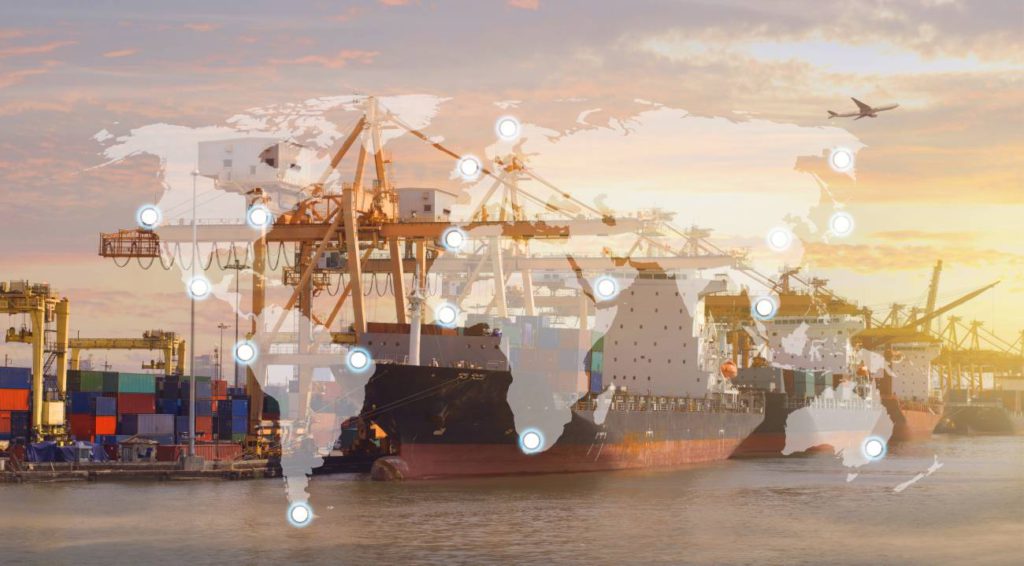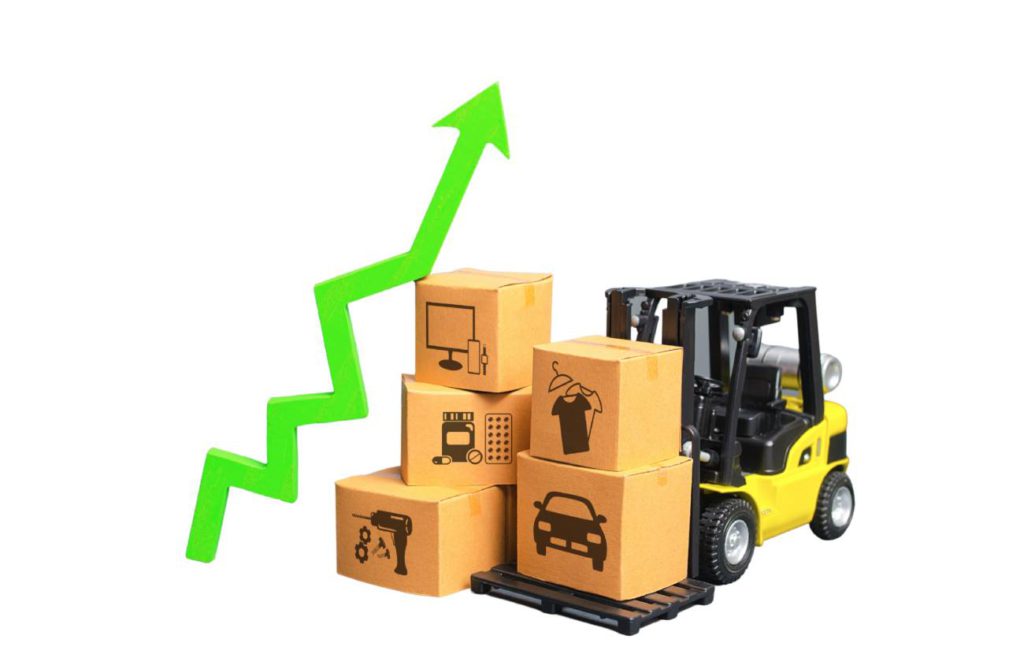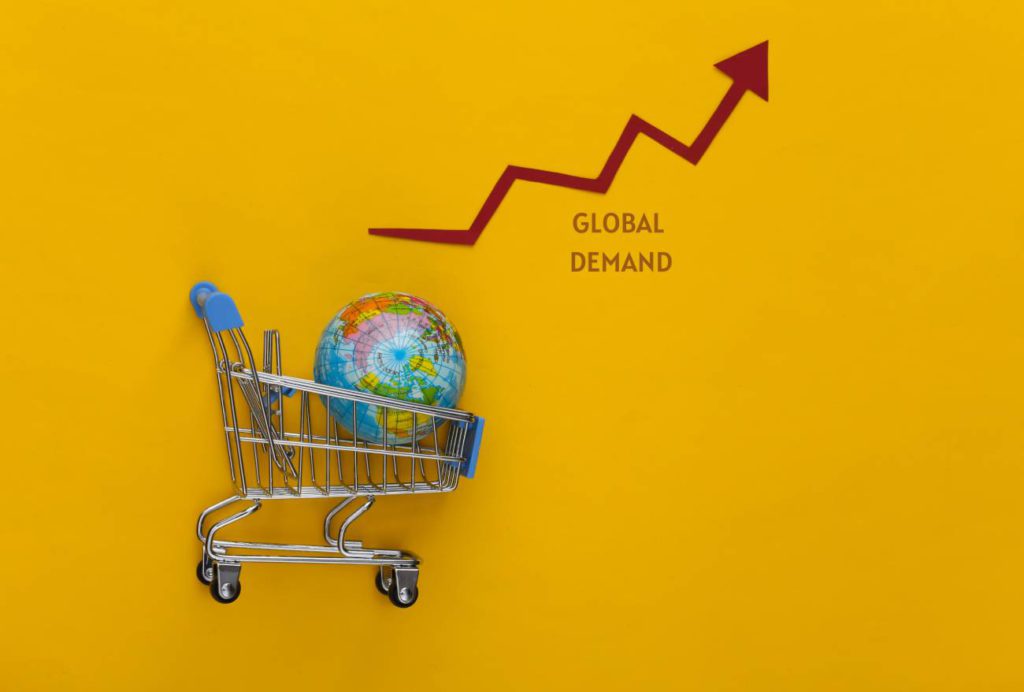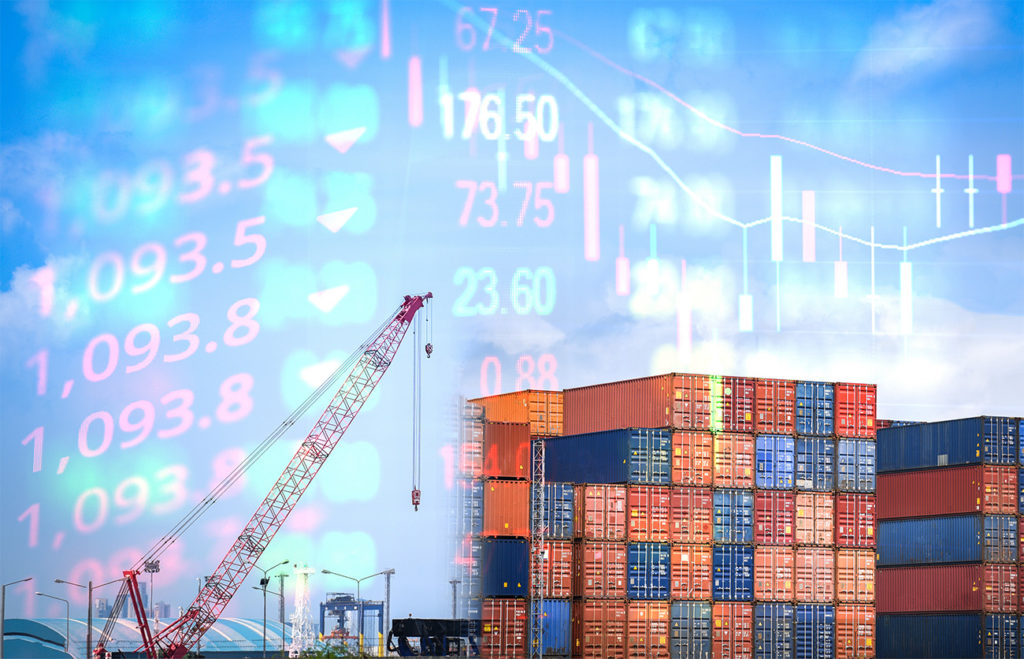The shipping industry is in a state of flux, and it will require a good amount of recovery time.

The Recovery of Shipping Industry – Even the occasional piece of decent financial news these days is quickly doused with disclaimers. According to preliminary figures, Indian goods exports have increased by 42% in October compared with the same month a year ago.
India’s goods exports (including tissue paper export) have increased by 54% this fiscal year compared to the same period the previous year. As governments, consumers, and businesses slowly return to routine, global commerce is increasing. Even if we assume that 2020 would be an exception owing to the covid-induced curfews, India’s export growth will still be strong when compared to standard periods in 2019.
On the other hand, the cost of exporting goods from India to foreign markets has risen to unprecedented levels. The cost of transporting a ‘container’ from Kochi to Europe’s Rotterdam port in the Netherlands grew by 873 percent from March 2020 until August 2021, according to statistics published by the portal of Indian Transport and Logistics News.
Other routes have seen similar increases in transport costs: Mundra-Hamburg has increased by 759 percent, Kochi-New York has increased by 650 percent, and Mundra-Baltimore has increased by 311 percent.

The Shipping Industry is Still Recovering
The surge in India’s exports has coincided with a worldwide logistical crisis, as seen by skyrocketing freight prices, a severe lack of containers to transport products in, and lengthy lines to unload vessels at ports.
Disparities and bottlenecks are producing shortages in a variety of industries including the shipping industry. India’s consumer technology imports fell 23% annualized in April-September 2021, while car tyres and tubing imports fell 28% and major automotive imports fell 47%. A worldwide chip scarcity is also a key factor in the decline of electronic products and automotive parts.
Furthermore, the international freight stalemate is set to last far into next year. According to Reuters, the CEO of Maersk, a Danish shipping company, “nothing has changed.” “According to the statistics, the issue will be resolved this year. According to some observers, the shortfall would only lessen well after the Chinese New Year in February 2022. Because of the growing consequences, Dr. A Sakthivel, head of the Federation of Indian Export Organisations (FIEO), asked the government to create a freight regulating agency while applauding the October trade numbers. He also requested the government to grant freight assistance to all exporters until March 2022, citing “skyrocketing freight rates.”
Demand is on the rise.
Major companies in the shipping industry projected excess capacity in the first covid-19 quarters, starting around March 2020, due to a significant decline in sales due to lockdowns. They diverted ships or just parked them elsewhere, and they modified their activities appropriately. Freight prices began to rise in August 2020. The rise in demand, which was fuelled by panic purchasing in the early stages of the crisis in various nations, was at the heart of the issue. Consumers who couldn’t afford to spend money on things like vacation, dining out, or amusement outside the house splurged on internet purchases. Amazon, for instance, saw its revenue and net profit climb by 37 percent and 84 percent in 2020, respectively.

The demand rise was only one part of the tale. This was accompanied by a global scarcity of containers and ships to transport them. There is indeed a worldwide trade deficit in which “developed” nations are net importers of consumption and consumer durables, while Asian nations such as China and Vietnam are net exporters.
This implies that containers are loaded in Asian ports and sent to major consumer markets like Europe and the U.S. They are emptied there and then sent empty back to Asian ports, where they will be replenished.
Bottlenecks have formed at every level. Over the last year, ports at the center of the global trade system, including Los Angeles and Shanghai, have gone in and out of shutdown. This has slowed down the loading and unloading of containers from container ships. Even as late as October 2020, the port of Los Angeles-Long Beach had only a few container ships ready to dump their goods at any given moment. That number has risen to 40 by February 2021. That number has surpassed 60 by the middle of October 2021.
Nations such as China, which are significant consumer products providers to the global economy, have enacted one of the tightest sets of covid-19 procedures in the world. Even just a single covid-19 case or two caused service disruptions in the shipping industry at key Chinese ports. As a result, even if Chinese manufacturers were allowed to reopen and begin producing items, there was no assurance that they would be exported.
Freightos, a computerized booking platform for maritime trade, stated in an explanation on the global logistics issue that by the fourth quarter of 2020, it had become evident that cargo costs were unlikely to come down anytime soon. “Logistics is worldwide,” it claimed. As a result of the congestion of ships off the coast of California, fewer empty containers are returning to Asia, resulting in fewer ships and containers accessible for exporting in November and December 2020, raising the cost of shipping a container from Asia to Europe by 400%. The same backlog has resulted in record-breaking delays.”
One-time shipping occurrences exacerbated the situation. Ever Given, a massive container ship, got stalled in the Suez Canal in March, essentially shutting down one of the world’s most important maritime trade routes for days. The lack of available containers grew as ships were compelled to take longer journeys. Freight prices on all other lines, not only the Suez route, soared because of the Suez crisis, which occurred at a time when world shipping was already at saturation.
India’s disadvantage

The worldwide container and ship scarcity have wreaked havoc on nations and ports that aren’t at the heart of the international supply chain, such as India. Due to the severe scarcity of container capacity, the global shipping industry and corporations have redirected their efforts to reduce bottlenecks along important routes.
“Much of the capacity that historically served emerging countries has been assigned to the major trade lanes, namely the trans-Pacific trades and Asia to Europe market,” according to Transport Intelligence, a consultancy firm. Because of the rise in prices, firms in the shipping industry can now deploy considerably smaller ships on certain routes. For reasons of client demand and speed, several shipping lines have begun to skip visits to smaller ports in expanding countries, preferring to concentrate their services around ‘mega ports.’ Because of the disruptions in shipping schedules, many smaller nations’ export capacity has been curtailed, leading to containers being abandoned in ports.” Small and medium-sized businesses in developing countries are “among the hardest hit,” according to the report.
This challenge has not been spared Indian exporters, especially in recent months. From May to August, the shipping cost of a twenty-foot container from India to the United States jumped by 19 percent, while the shipping cost of a forty-foot container rose by 38 percent, as per Container xChange, a global marketplace for containers. “Although freight escalation is a worldwide phenomenon,” said Sakthivel of FIEO in June, “we may be struggling more as we have a pretty substantial MSME (component) in exports who have very little negotiation strength.”
He urged for a strong emphasis on a shipping line that can cater to the Indian economy, noting that Indian exporters are at the “grace of international shipping lines.” The number of so-called “blank sailings,” in which ships circumvent ports on their itinerary because they are unprofitable (or because alternative, better profitable ports are available), has risen considerably.
Containers are stacking up at Indian ports as a result. Ships managed by multinational maritime lines, for the most part, may avoid Indian ports entirely. When an Indian exporter does succeed to get a container onto a ship, the costs can be staggering. The quantity of inbound containers at Chennai port is around four times the number of containers being exported out, suggesting that containers are building up at the port, according to Container xChange.
Despite the record increases in Indian exports, Johannes Schlingmeier, co-founder, and CEO of Container xChange, highlighted out that the discrepancy was due to “exporters suffering impediments to export their goods from India.” Many smaller exporters find it economically unviable to transport goods over sea owing to the exceptionally high freight expenses. In terms of international trade, India is a lesser-known destination than China, Europe, or the United States. Exporters are also dependant on international shipping lines to trade due to the comparatively small volume of India’s government shipping line, Shipping Corporation of India.
Time is ticking away.
As a result, according to a report released in April by the U.N Conference on Trade and Development (UNCTAD), an intergovernmental organization dedicated to promoting the interests of developing nations in commerce, the increase in freight rates in developing countries such as in Africa and Latin America outpaced the increase on the main East-West routes (China-US or China-Europe). “A disparity among supply and demand for empty containers was aggravated, as empty containers were abandoned and failed to be relocated (transferred to where they might be filled),” it continued, as carriers began exerting discretion and avoiding ports of lesser importance.
“Carriers, ports, and shippers all were caught off guard by the outbreak,” the UNCTAD research says. Since late 2020, there has been an exceptional scarcity of empty containers. There were no contingency preparations in place to prevent or minimise the detrimental effects of the non – availability. Given present patterns, it would most likely take several months for this disturbance to be absorbed into the marine supply chain for the system to restart smoother operations.”
Furthermore, the global shipping industry is an oligopoly, with a few numbers of corporations dominating most of the maritime traffic. This has led to accusations of cartelization and abusive trade practices from several firms, including Indian exporters.
This emergency, as bad as it is, will eventually pass, most likely by early next year. Chinese factories have already ramped up manufacturing of new containers, while shipbuilders are experiencing a boom in orders. Longer-term concerns about the world trade system’s ability to resist disruptions like the Covid-19 crisis continue. Likewise, Indian officials would have to reconsider how to strengthen the country’s export network and shipping infrastructure to better resist future crises.
Also, read how the slowdown in Global trade hits the container shipping sector here.


